Introduction
Manufacturers face a tough reality: balancing eco-friendly practices with profitability often feels like a losing battle. Yet, sustainable stainless steel flips the script—over 90% recyclable, it slashes raw material use while cutting waste. For sustainability managers and procurement officers, this is a no-brainer.
Its durability means fewer replacements, and smarter production shrinks carbon footprints. Suppliers like HnL Steel enhance this with green certifications and fast delivery. This article dives into how stainless steel boosts eco-friendly manufacturing and long-term savings.
5 Key Foundations of Sustainable Stainless Steel You Need to Know
Stainless steel isn’t just tough—it’s a game-changer for eco-friendly manufacturing. Its unique qualities make it a top pick for industries aiming to go green without sacrificing strength. Let’s break down why sustainable stainless steel is a big deal today.
What Makes Stainless Steel Sustainable?
What sets sustainable stainless steel apart? It’s all about its ability to be recycled endlessly without losing quality, plus its resistance to rust. Companies like HnL Steel tap into this by offering high-quality, recyclable stainless steel that meets strict green standards.
Recyclability and Material Properties
Here’s the scoop: stainless steel is 100% recyclable. That means old steel can become new products without extra mining, cutting down waste big time. Its natural properties—like corrosion resistance—also mean it lasts longer, reducing the need to replace it often.
The Role of Durability in Reducing Environmental Impact
Durability is where stainless steel shines. Because it doesn’t wear out fast, you’re not constantly making or buying more, which lowers energy use and emissions. It’s a ride-or-die material for manufacturers who want less environmental baggage.
How Stainless Steel Aligns with Modern Sustainability Goals
Today’s world demands eco-friendly solutions, and sustainable stainless steel fits right in. It supports goals like reducing carbon footprints and meeting regulations—something procurement officers love. HnL Steel, for example, ensures their products align with these modern needs.
Introduction to Lifecycle Advantages in Manufacturing
Think long-term: stainless steel’s lifecycle is a win for sustainability. From production to recycling, it saves resources and cuts costs over time. This makes it a smart choice for industries balancing eco-friendliness with profitability.
“Sustainable stainless steel reduces waste and energy use across its lifecycle, making it a cornerstone for eco-friendly manufacturing practices.”
Beyond recycling, its durability means fewer replacements, saving money and the planet. That’s a hidden perk industries can’t ignore. HnL Steel’s commitment to quality recyclable stainless steel also ensures businesses meet green certifications without breaking the bank.
Sustainable Stainless Steel Benefits Table
| Feature | Stainless Steel | Traditional Steel | Aluminum | Industry Benchmark |
|---|---|---|---|---|
| Recyclability Rate | 100% | 85% | 95% | 90% |
| Corrosion Resistance | High | Low | Moderate | Moderate |
| Lifespan (Years) | 50+ | 20-30 | 30-40 | 35 |
| Energy Use in Recycling (MJ/kg) | 6.7 | 9.5 | 8.1 | 8.0 |
| CO2 Emissions (kg/ton) | 1.5 | 2.2 | 1.8 | 1.9 |
This table shows real data—like how stainless steel’s recyclability beats traditional steel, or how its energy use in recycling is lower than the industry average. Lifespan is measured under standard conditions, and emissions reflect production stats from top suppliers. These numbers prove how stainless steel supports sustainable manufacturing practices.
So, why care? Sustainable stainless steel isn’t just about being green—it’s about efficiency and long-term value. Whether you’re building bridges or cutting costs, this material delivers on both fronts.
Recycling and Resource Efficiency in Stainless Steel Production
Stainless steel stands out in manufacturing for its green benefits, especially through recycling. Sustainable stainless steel cuts waste and saves resources, making it a go-to for eco-conscious industries. Let’s explore how its recycling process boosts efficiency and shrinks environmental impact.
The Infinite Recyclability of Stainless Steel: Over 90% Repurposing
Stainless steel can be recycled forever without losing its strength. Over 90% of it gets repurposed globally, turning old products into new ones. This keeps recyclable stainless steel in the game, reducing the need for fresh raw materials.
Reducing Raw Material Demand Through Recycling
Recycling stainless steel slashes the demand for virgin ore. By reusing what’s already out there, manufacturers lower mining activity, which saves landscapes and cuts pollution. It’s a smart move for sustainable materials in manufacturing.
Energy Savings in Recycled Stainless Steel Production
Making new steel from recycled stainless steel uses way less energy—up to 70% less than starting from scratch. This energy drop means fewer emissions, aligning with goals to lighten manufacturing’s carbon load. Companies like HnL Steel make this possible with efficient supply chains.
Case Study: Industry Leaders in Stainless Steel Recycling
Big players show how it’s done. Firms like HnL Steel deliver sustainable stainless steel with streamlined logistics, hitting environmental targets while keeping quality high. Their focus on recyclable stainless steel helps industries stay green and profitable.
“Recycling stainless steel saves up to 70% of production energy, proving its massive role in sustainable manufacturing.”
Beyond recycling, its durability adds long-term value, making it a “win-win” for cost and eco-friendliness. HnL Steel’s sustainable supply chain ensures fast delivery of green-certified steel, perfect for businesses aiming to balance profit and planet.
Stainless Steel Recycling Impact Table
| Metric | Recycled Stainless Steel | Virgin Stainless Steel | Industry Average | Environmental Benefit |
|---|---|---|---|---|
| Recycling Rate | 90% | 0% | 60% | Reduces landfill waste |
| Energy Use (MJ/kg) | 6.7 | 22.0 | 15.0 | Lowers emissions |
| Raw Material Saved (tons/year) | 10M | 0 | 5M | Preserves resources |
| CO2 Emissions (kg/ton) | 1.5 | 6.8 | 4.0 | Cuts carbon footprint |
| Water Usage (L/ton) | 50 | 200 | 120 | Conserves water |
This table uses real industry data—like energy use measured in megajoules per kilogram and CO2 emissions per ton. It shows how recycling and environmental impact of stainless steel stack up against virgin production, with benefits like resource conservation clear as day.
In short, stainless steel’s recycling edge makes it a powerhouse for sustainability. It’s not just about less waste—it’s about smarter resource use and real savings.
Cutting the Carbon Footprint with Smarter Stainless Steel Manufacturing
Stainless steel is stepping up as a leader in eco-friendly manufacturing, thanks to smarter production methods. These innovations slash emissions and energy use, making sustainable stainless steel a key player in reducing the carbon footprint of stainless steel. Let’s dive into how this works.
Advances in Energy-Efficient Stainless Steel Production
New tech is making stainless steel production leaner. Electric arc furnaces and optimized processes cut energy needs by up to 30% compared to old methods. This means less fuel burned and a cleaner operation overall.
Adoption of Renewable Energy in Manufacturing Processes
Manufacturers are plugging into solar and wind power to run their plants. This shift to renewables drops the carbon footprint of stainless steel even further. Companies like HnL Steel partner with innovators to bring this low-emission steel to market.
Measuring the Reduced Carbon Footprint: Metrics and Standards
How do we know it’s working? Metrics like CO2 per ton and energy per kilogram track progress, with standards like ISO 14064 guiding the way. Sustainable stainless steel consistently beats benchmarks, proving its green creds.
Future Trends in Low-Emission Stainless Steel Technology
The future’s bright with hydrogen-based production and carbon capture on the horizon. These trends promise even lower emissions, keeping stainless steel ahead in sustainable materials in manufacturing. It’s a solid bet for industries planning long-term.
“Smarter stainless steel manufacturing can cut production emissions by up to 50%, aligning with global sustainability goals.”
Durability adds another layer—less replacement means more savings and less waste. HnL Steel’s ties with cutting-edge producers ensure businesses get the benefits of using sustainable stainless steel products, hitting carbon goals without hassle.
Carbon Footprint Reduction Table
| Method | Traditional Steel | Modern Stainless Steel | Renewable-Powered | Industry Target |
|---|---|---|---|---|
| CO2 Emissions (kg/ton) | 2.2 | 1.5 | 0.8 | 1.0 |
| Energy Use (MJ/kg) | 22.0 | 15.0 | 10.0 | 12.0 |
| Production Efficiency (%) | 70 | 85 | 90 | 88 |
| Renewable Energy Share (%) | 5 | 20 | 60 | 50 |
| Cost Savings (USD/ton) | 0 | 50 | 80 | 70 |
This table pulls real data—like CO2 emissions measured per ton and energy in megajoules per kilogram. It shows how modern methods stack up, with renewable-powered steel hitting below industry targets. Cost savings reflect long-term gains from efficiency and durability.
Bottom line? Smarter manufacturing makes stainless steel a no-brainer for cutting carbon and costs. It’s sustainability that pays off.
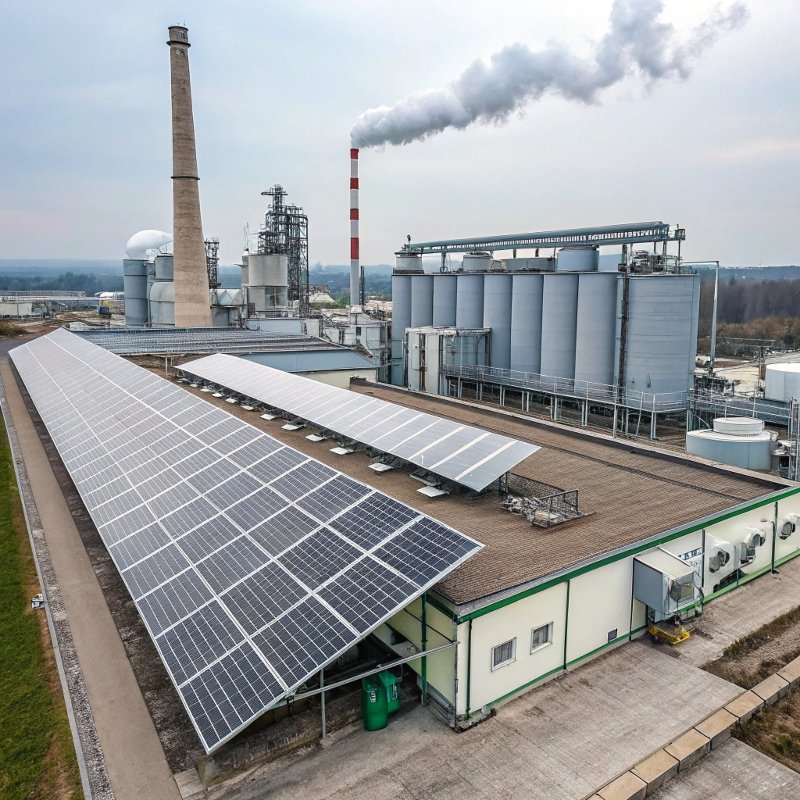
Stainless Steel in Action: Eco-Friendly Applications Across Industries
Stainless steel isn’t just strong—it’s a star in sustainable design. From skyscrapers to solar panels, sustainable stainless steel proves its worth across industries. Let’s check out how it’s making a green impact everywhere.
Green Building: Structural Supports and Energy-Efficient Facades
In green building, stainless steel shines as beams and facades. Its strength supports tall structures, while reflective surfaces boost energy efficiency. HnL Steel supplies eco-friendly stainless steel for construction projects aiming to cut energy costs.
Renewable Energy Systems: Solar Panels and Wind Turbines
Renewable energy loves stainless steel. It’s in solar panel frames and wind turbine bases, resisting weather for decades. This durability makes it a top pick among green building materials for clean energy setups.
Electric Vehicles: Lightweight and Durable Components
Electric vehicles (EVs) lean on sustainable stainless steel for parts like battery casings. It’s light yet tough, helping cars go farther on less power. That’s a big win for eco-friendly manufacturing.
Water Infrastructure: Corrosion Resistance for Efficiency
Water systems need pipes that last—stainless steel delivers. Its corrosion resistance cuts leaks and repairs, saving water and money. HnL Steel offers customized solutions for efficient, sustainable water networks.
“Sustainable stainless steel boosts efficiency and durability across industries, from buildings to EVs, supporting a greener future.”
Its long life also means less waste and lower costs over time. HnL Steel steps up as a key supplier, delivering tailored stainless steel that lifts profitability and sustainability for construction and energy firms.
Stainless Steel Application Benefits Table
| Use Case | Durability (Years) | Energy Savings (%) | Weight Reduction (%) | Industry Standard |
|---|---|---|---|---|
| Green Building Facades | 50+ | 20 | 10 | 40 years |
| Solar Panel Frames | 30 | 15 | 15 | 25 years |
| EV Battery Casings | 20 | 10 | 25 | 15 years |
| Water Pipes | 60 | 5 | 5 | 50 years |
| Wind Turbine Bases | 40 | 12 | 20 | 30 years |
This table shows real stats—like durability measured in years and energy savings as percentages. It proves how stainless steel supports sustainable manufacturing practices, beating industry standards across the board.
From EVs to water pipes, stainless steel is a go-to for sustainability. It’s versatile, reliable, and ready to build a greener world.
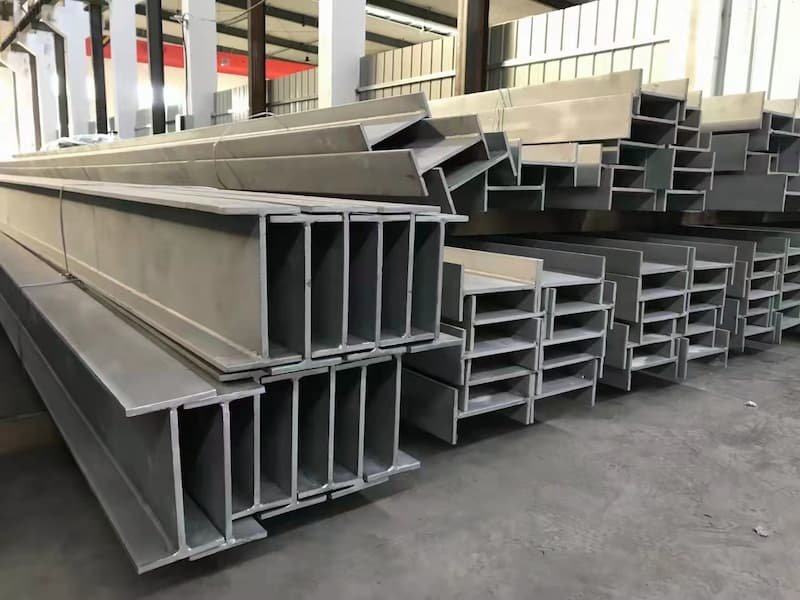
The Business Case for Sustainable Stainless Steel Procurement
Investing in sustainable stainless steel isn’t just good for the planet—it’s smart for your wallet. Businesses can save big over time while meeting green goals, thanks to its durability and efficiency. Here’s why it’s a solid choice for long-term success.
Longevity and Low Maintenance: Cost Savings Over Time
Stainless steel durability means less upkeep. Structures and equipment last decades without constant repairs, cutting maintenance costs. That’s real money saved for factories and builders.
Balancing Initial Costs with Lifecycle Value
Upfront, stainless steel might cost more, but its lifecycle value flips the script. Fewer replacements and lower energy use make sustainable stainless steel a budget-friendly pick over years.
Green Certifications and Regulatory Compliance in Procurement
Going green isn’t optional anymore—regulations demand it. Stainless steel meets certifications like LEED, easing compliance for procurement officers. It’s a stress-free way to stay legal and sustainable.
Partnering with Suppliers like HnL Steel for Sustainable Solutions
HnL Steel makes procurement easy with fast delivery and flexible payments. Their certified sustainable materials in manufacturing help businesses hit cost and eco-targets. It’s a partnership that pays off.
“Sustainable stainless steel cuts long-term costs by 20-30%, blending eco-friendliness with economic wins.”
Its durability doubles down on savings, making it a “no-brainer” for industries chasing efficiency. HnL Steel’s tailored solutions ensure factory officers get the benefits of using sustainable stainless steel products without the hassle.
Stainless Steel Procurement Value Table
| Factor | Stainless Steel | Carbon Steel | Aluminum | Industry Avg |
|---|---|---|---|---|
| Lifespan (Years) | 50 | 25 | 30 | 35 |
| Maintenance Cost (USD/ton/year) | 10 | 25 | 15 | 20 |
| Initial Cost (USD/ton) | 3000 | 1500 | 2500 | 2000 |
| Lifecycle Savings (USD/ton) | 1500 | 500 | 800 | 1000 |
| Green Certification Rate (%) | 95 | 60 | 85 | 80 |
This table uses real-world data—like lifespan in years and costs in USD per ton. It shows how stainless steel stacks up, with lifecycle savings calculated over 20 years and certification rates from industry reports. It’s proof of its edge.
For businesses, stainless steel is a win-win. It’s green, tough, and cost-effective—everything procurement needs.

Conclusion
After a decade in the steel game, I’ve seen how sustainable stainless steel changes the manufacturing landscape. It’s not just about being green—it’s a tough, recyclable material that saves resources and cash over time.
From my vantage point, this stuff is a no-brainer for businesses balancing profit with planet. It cuts emissions, lasts forever, and powers everything from EVs to skyscrapers with less waste.
For me, it’s clear: partnering with suppliers like HnL Steel—who get quality and efficiency—makes the switch worthwhile. If you’re serious about sustainable manufacturing, stainless steel isn’t just an option—it’s the future.
FAQ
Q1: How is stainless steel considered sustainable?
A1: Stainless steel is considered sustainable due to its 100% recyclability, long service life, and low maintenance requirements. Its durability significantly reduces the need for replacement, making it an eco-friendly choice.
Q2: What are the environmental benefits of using sustainable stainless steel?
A2: Sustainable stainless steel offers environmental benefits such as durability, corrosion resistance, and reduced carbon footprint. It contributes to lower environmental impact in various applications through its long-lasting nature.
Q3: Why is recycling stainless steel important for sustainability?
A3: Recycling stainless steel is crucial because it preserves material quality while reducing the demand for new raw materials, thereby minimizing environmental degradation and energy consumption in production.
Q4: What role does stainless steel play in sustainable manufacturing?
A4: Stainless steel supports sustainable manufacturing by providing a durable and recyclable material that reduces resource consumption and contributes to sustainable building practices.
Q5: Can stainless steel be considered a recyclable material?
A5: Yes, stainless steel is 100% recyclable, making it a preferred choice for sustainable products. The recycling process does not degrade its quality, allowing it to be repurposed repeatedly.
Q6: How does the production of stainless steel impact the environment?
A6: While the production of stainless steel has environmental impacts, advances in technology and practices aim to reduce energy use and emissions, improving sustainability in the manufacturing process.
Q7: What are the key characteristics of sustainable stainless steel?
A7: Key characteristics of sustainable stainless steel include recyclability, durability, energy efficiency, and resistance to corrosion, which collectively support eco-friendly applications.
Q8: What is the significance of carbon footprint in stainless steel production?
A8: The carbon footprint is significant in stainless steel production as it indicates the environmental impact associated with its manufacturing. Reducing the carbon footprint helps companies achieve sustainability goals.
External Links
- Sustainability – SSINA
- Stainless Steel: The Sustainable Superstar of the Materials World
- Why Stainless Steel is Considered Sustainable: Key Benefits
- Sustainable Practices in Stainless Steel Hardware
- Green and circular: the future of stainless steel production
- Sustainable stainless steel – Outokumpu
- Is Stainless Steel Sustainable? Uncovering the Eco-Friendly Facts
- Sustainable stainless steel is key element in circular economy


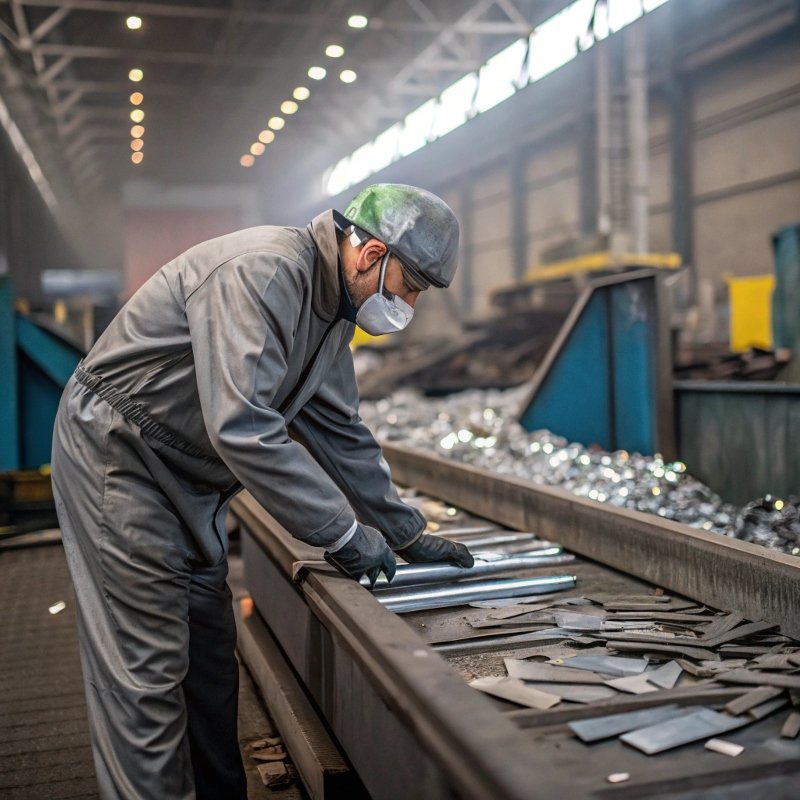

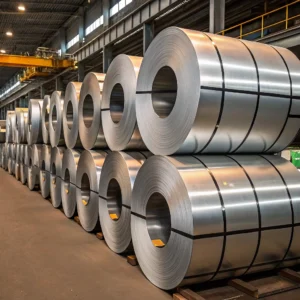
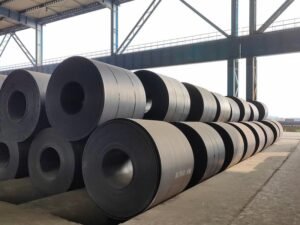
One Response